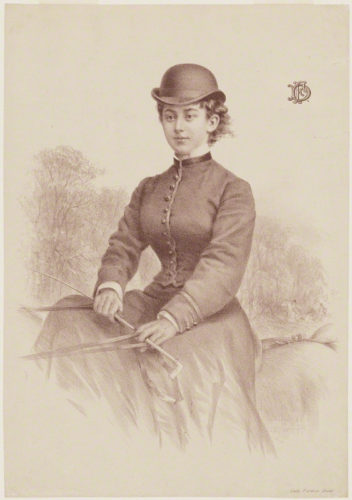 Margot McCuaig is an acclaimed novelist, an experienced executive producer in sport broadcasting and an award-winning documentary filmmaker. As director of purpleTV she leads the creative and digital production of the company, and as managing director of mneTV is responsible for the company’s multi-million pound programme making operation. She recently wrote, produced and directed ‘Honeyballers’ a documentary film about the history of women’s football in Scotland. She has a BA Hons in History and Politics from the University of Strathclyde and an MPhil in Social History from the University of Glasgow.
Margot McCuaig is an acclaimed novelist, an experienced executive producer in sport broadcasting and an award-winning documentary filmmaker. As director of purpleTV she leads the creative and digital production of the company, and as managing director of mneTV is responsible for the company’s multi-million pound programme making operation. She recently wrote, produced and directed ‘Honeyballers’ a documentary film about the history of women’s football in Scotland. She has a BA Hons in History and Politics from the University of Strathclyde and an MPhil in Social History from the University of Glasgow.
In Mrs Matilda Pullan’s ‘Maternal Counsel to Daughters’ of 1855 it was argued that there is ‘no better exercise for women in the world than rubbing a table or sideboard, or sweeping a room’. [1]
This Victorian ideology was very much embedded in the notion that the legitimation of sport merely strengthened the legitimation of the dominant male preserve and the continuity of patriarchal assumptions. Women, it was argued, were neither emotionally nor physically able to participate in strenuous exercise. Femininity was therefore observed in the context of gentility and passivity and, crucially, in reproductive terms that ensured the nurture of the male, his children and the family home. While women were regarded as angels of the home, sport was the bastion of masculinity and defined the demarcation of the distinctive gender roles.
Fortunately, there were female transgressors, dangerous women who, in daring to play football, challenged stereotypical attitudes and not only contested notions of the perceived norm but deconstructed concepts of femininity.
Women have been playing football for at least as long as men, from as far back as the 1700s. [2] Records exist of women playing football in Scotland in 1628 but it was in the late 19th century that the game began to grow in popularity. The first women’s football international in the world was played on the 10th of May 1881 in Edinburgh, when a Scottish side took on an English select. Albeit an unofficial international, Lily St Clair’s goal for a victorious Scotland is recorded as the first goal scored in the history of women’s football.
Whilst the women were revelling in developing ownership of a game that emancipated them from the restrictions of domestic responsibilities and passive ladylike exercise, the authorities were less favourable. In 1894, the British Medical Journal published a report in response to the increasing popularity of women’s football. It was damning. ‘Football should be damned out of hand as dangerous to the reproductive organs and breasts because of sudden jerks, twists and blows.’ [3]
Undeterred at attempts to discredit the women’s game, another Scot, the aristocratic poet, writer, women’s rights activist and adventurer, Lady Florence Dixie from Dumfries, was leading the way in the development of organised football in Britain. In October of 1894, she published her intention to create a ‘British Ladies Football’ team in a London newspaper.

The club founders engaged the services of an enthusiastic captain, Mary Hutson. Dubliner Mary played under the clever, attention-grabbing pseudonym of Nettie Honeyball. ‘Nettie’ understood the importance of influential role models such as Lady Florence Dixie (Lady Florence was a well-known ‘celebrity’, her brother was instrumental in bringing down Oscar Wilde) and together they strove to develop the women’s game and advocate equal rights for women.
Lady Florence Dixie was a curious and extraordinary Scot with a desire to make the world an equal place for women. The objective of her women’s football team was to use the sport as a means to create opportunities for women in a tense Victorian society constricted by entrenched gender bias and gross unfairness and inequality. With her captain, the aptly named Nettie Honeyball in tow, Lady Florence’s team, comprised of middle class ‘ladies’, began a campaign that continues, albeit on a different platform with a different agenda, to this day. A diverse agenda, but the similarities are there. It is still about empowerment. It is about dangerous women who dare to challenge.
Florence Dixie was resolute in her ambition to deliver equality for women. In an interview a year after the formation of her club she was clear about her objective. “I founded the association last year, with the fixed resolve of proving to the world that women are not the ‘ornamental and useless’ creatures men have pictured. I must confess, my conviction on all matters, where the sexes are so widely divided, are all on the side of emancipation, and I look forward to the time when ladies may sit in Parliament and have a voice in the direction of affairs, especially those which concern them most.” [4]
With such unequivocal leadership in the form of Dixie, the early pioneers of the game remained resolute in their desire to develop the game further and in 1896 a new team emerged led by the ambition of honorary Scot, Mrs Graham.
Mrs Graham played alongside Nettie Honeyball before forming the Mrs Graham’s XI. Like Florence Dixie, she would also become a key figure in women’s football. Helen Graham also played under a pseudonym. Born Helen Matthews, such was her determination to transgress, she travelled alone from Montrose in Scotland, in a period when travel was expensive and arduous, to play football in London. A dangerous act in itself.
In a broader sense, women in football were regarded with distrust. They were dangerous. These transgressors were a threat to the cultural, historical and masculine value systems carved into the male football establishment. The critical foundation of a concerted campaign to exclude women from football was solidified in 1902 with a warning from the Council of Football Association to their FAs not to play charitable matches against women’s teams. This momentum grew and support for women’s football in the form of facilities was effectively banned in 1921. [5] This restriction would remain in place in an official capacity until the 1970s. As a result, the game stalled dramatically but the First World War provided a fresh impetus for women in both society and the workplace with the formation of women’s football teams in munitions factories throughout the country.
New pioneers went on to pave the way for equality with Dick Kerrs Ladies, Edinburgh Ladies and munition factory teams in Scotland such as Beardmores Forge drawing large crowds and a growing respect for a game that was beginning to develop an identity in its own right. This was a game of women’s football, not a game where women where trying to be men …
Nancy “Cannonball” Thompson, Rose Reilly and Edna Neillis continued to pioneer and transgress, following in the footsteps of Lady Florence Dixie, Nettie Honeyball and Helen Graham. Their passion for equality has altered history.
With passion there comes determination and a will to push disappointment to the side and battle on. In today’s context, in women’s football the players and coaches have very little financial support and resources, the girls endure scathing attacks on the game as a craft, on their personal skill and capabilities as footballers, and as if that’s not enough they have to listen to the ridiculously boring and unfortunately enduring notion that they are women trying to be men.
That inaccurate picture clouds the real vision. In women’s football there is talent, passion and danger in abundance. It is an enviable mix. So much so, this potent combination, which led to the banning of the women’s game in the UK in 1921, has endured persistent attacks to discredit women and protect the male preserve. Excuses were unfurled but the message was simple, with crowds of tens of thousands attending women’s matches the position of men in society was being challenged. Instead of embracing something strong and admirable the decision was taken to try and destroy it. Bizarrely, given the game’s popular success and persistent support since the 19th century, how the authorities couldn’t envisage the defiance that followed is a mystery.
Women continued to play and transgress throughout the ban.
It was such determination that forced the official recognition of women’s football in the 1970s, despite the fact that in some quarters sexist ideologies were inherently fixed and unchanging, a reflection of the recurrent dominant ideas of gender that been persistently associated with football and indeed sport in general since the 19th century. In 1956, Welsh International Trevor Ford had commented, ‘football is not a women’s game, it’s not a pastime for milksops and sissies’ [6] and a women’s charity match in London in 1971 was advertised as a clash between ‘the world’s most beautiful players.’ [7]
It’s a cliché, an overused boring anecdote that football is more than a game, but when it comes to the women’s game it is exactly that. It is a drive to succeed, a commitment to achieve and a will to challenge the world to wake up to itself and its outdated idiosyncrasies and inadequacies and make space for women on an equal footing.
The players of Anna Signeul’s Scotland national women’s team, and Champions League qualified domestic teams Glasgow City FC and Hibernian Ladies aren’t openly brandishing banners depicting their call for equal rights but their determination to create equal opportunities are just as blatant and exciting. The understanding of what the women’s game is and what it is quite spectacularly trying to achieve, is becoming clearer thanks to their commitment.
Women aren’t trying to be men; that notion has gone beyond laughable. It’s just downright annoying. They are playing women’s football, with women being the operative word. They are strong, independent individuals who collectively epitomise the fight for a new beginning and the recognition that they are equal. They utilise their skill, talent and knowledge to generate the passion and determination to allow us all, as women and men, to continue to grow.
Thanks to them, and the endeavours of Lady Florence Dixie, the struggle continues.
And my goodness, isn’t it just fabulous to watch?
Want to know more?
EDITORIAL
Margot McCuaig, Women in Scottish Football. Playing the Game 1880 to 1970 (Honours dissertation, University of Strathclyde), 1996
Margot McCuaig, To what extent can Bill Forsyth’s Gregory’s Girl be used to reconstruct football culture in Glasgow in the early 1980s (MPhil dissertation, University of Glasgow), September 2002
Lady Florence Dixie, Across Patagonia (Edinburgh, Bentley, 1880)
Lady Florence Dixie, Gloriana, or the Revolution of 1900 (London, Henry & Co., 1890
FILM
Honeyballers; a factual entertainment film exploring the unique journey of the pioneers of Scottish women’s football broadcast on the BBC and written, produced and directed by Margot McCuaig
Sources:
[1] K. E. McCrone, Sport and the Physical Emancipation of English Women 1870-1914 (Routledge, 1988), p.10
[2] F. P. Magoun, Jr, ‘Scottish Popular Football, 1424-1815’, The American Historical Review, Vol.37, no.1, (Oct 1931), p.11
[3] K. E. McCrone, Sport and the Physical Emancipation of English Women 1870-1914 (Routledge, 1988), p.201
[4] Sketch, (London, 1895), p.60
[5] A. Ward, Some notes on the History of Women’s Soccer, Unpublished paper, p.6
[6] N. Fishwick, English Football and Society 1910-1950, (London, 1989) p.147
[7] Quoted in Williams J and S Wagg, British Football and Social Change; Getting into Europe, (Leicester, 1991) p.97

